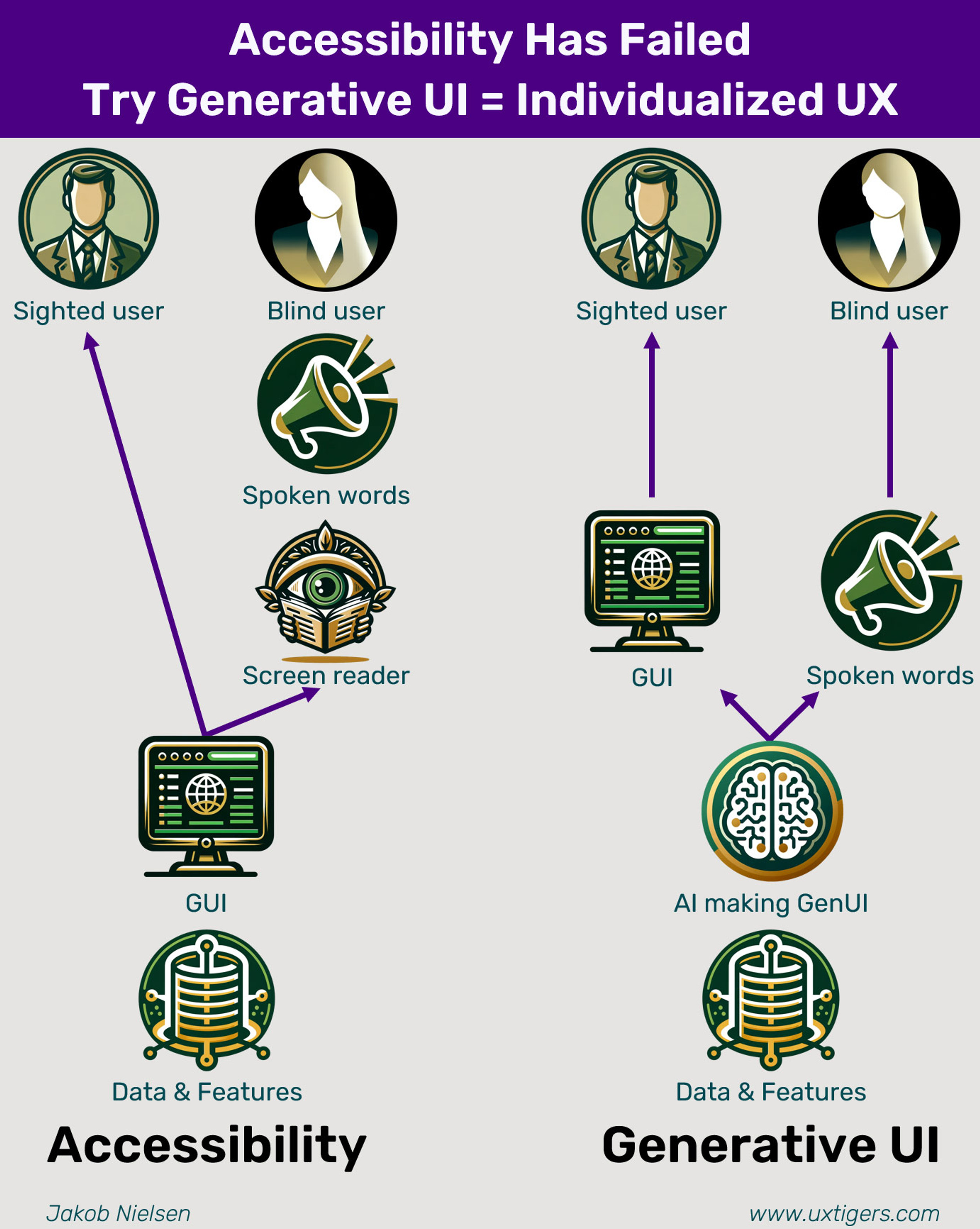"Accessibility has failed: Try generative UI = individualized UX". Says legendary usability expert Jakob Nielsen. What he means by "accessibility" is borrowing the concept of "accessibility" in the physical world, where wheelchair ramps on buildings and busses are built, and so on, and applying it to the world of computing. This means, for example, making screen readers that translate screens into speech or braile, so blind or hearing-impared people can use computers. If you're a web developer you're supposed to fill in your "alt" attributes for all your image tags so screen readers can tell users what the image is. (Finishing out the headline, "UI" stands for "user interface" and "UX" stands for "user experience" -- most of you probably already know that.) Jakob Nielsen says:
"Accessibility has failed as a way to make computers usable for disabled users. My metrics for usable design are the same whether the user is disabled or not: whether it's easy to learn the system, whether productivity is high when performing tasks, and whether the design is pleasant -- even enjoyable -- to use."
"Assessed this way, the accessibility movement has been a miserable failure. Computers are still difficult, slow, and unpleasant for disabled users, despite about 30 years of trying. (I started promoting accessibility in 1996 when I worked at Sun Microsystems, but by no means claim to have been the first accessibility advocate.)"
"There are two reasons accessibility has failed:"
"Accessibility is too expensive for most companies to be able to afford everything that's needed with the current, clumsy implementation. There are too many different types of disabilities to consider for most companies to be able to conduct usability testing with representative customers with every kind of disability. Most companies either ignore accessibility altogether because they know that they won't be able to create a UX that's good enough to attract sufficient business from disabled customers, or they spend the minimum necessary to pass simplistic checklists but never run the usability studies with disabled users to confirm or reject the usability of the resulting design."
"Accessibility is doomed to create a substandard user experience, no matter how much a company invests, particularly for blind users who are given a linear (one-dimensional) auditory user interface to represent the two-dimensional graphical user interface (GUI) designed for most users."
"'Generative UI' is simply the application of artificial intelligence to automatically generate user interface design."
But he doesn't stop there. He goes on to envision "first-generation" and "second-generation" generative UI:
"'First-generation generative UI' for frozen designs where the AI only modifies the UI before shipping the product."
"I foresee a much more radical approach to generative UI to emerge shortly -- maybe in 5 years or so. In this second-generation generative UI, the user interface is generated afresh every time the user accesses the app. Most important, this means that different users will get drastically different designs. This is how we genuinely help disabled users."
Accessibility has failed: Try generative UI = individualized UX

There are no comments yet.